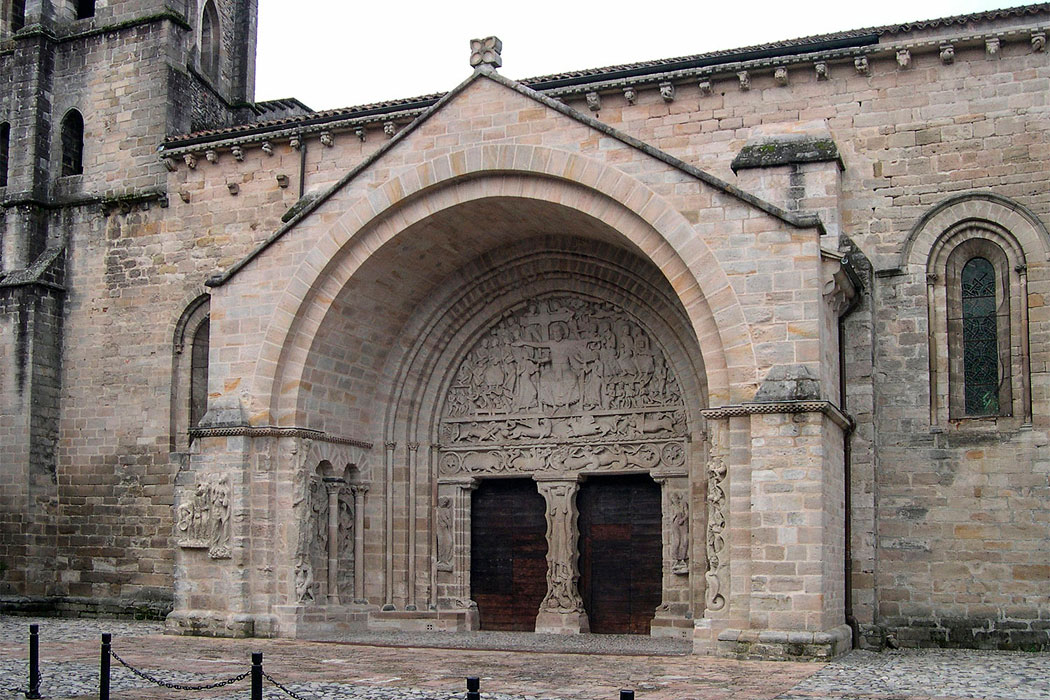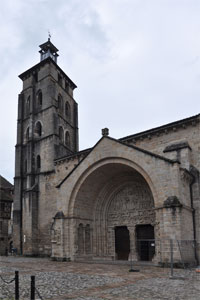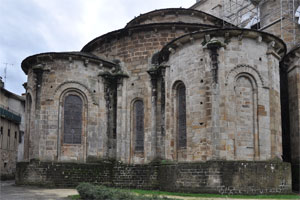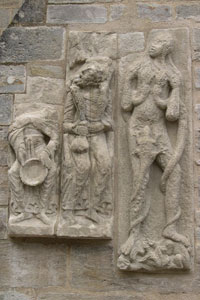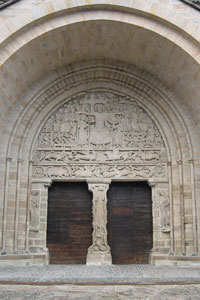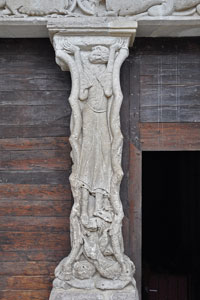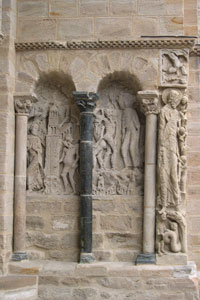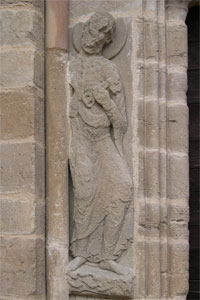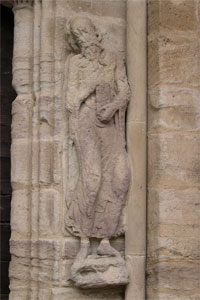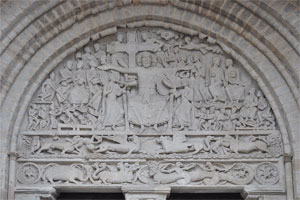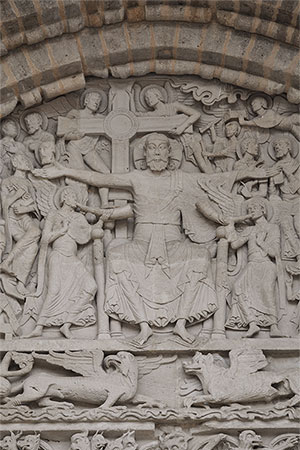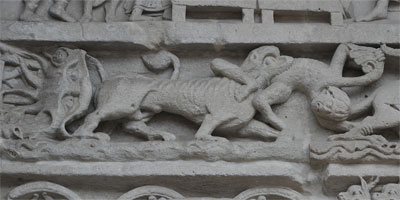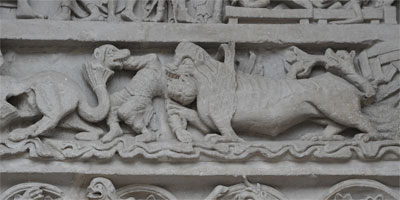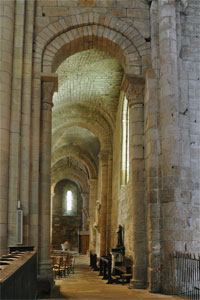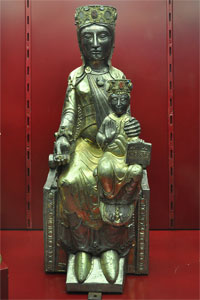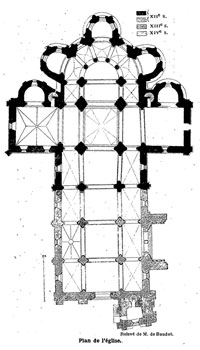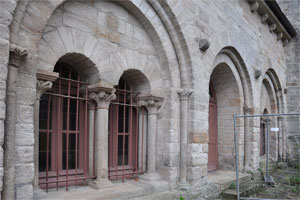Abbey of Saint-Pierre de Beaulieu-sur-Dordogne
Abbaye de Beaulieu / Belloloco / Bellus Locus
(Beaulieu-sur-Dordogne, Corrèze)
The monastery of Saint-Pierre de Beaulieu was founded in the year 855 by Rodulph (also known as Rodolph or Raoul, † 866), a member of the comital family of Quercy and Turenne. Rodulph had been the abbot of the monastery of Saint-Pierre de Solignac (Haute-Vienne) and, at the time of founding Beaulieu, held the position of Archbishop of Bourges. For the new monastic establishment, the prelate contributed land from his own estate, which became known as Bellus Locus.
In the year 860, the monastery was formally consecrated, adopting the Rule of Saint Benedict and being placed under the patronage of Saint Peter (Saint-Pierre). The first monastic community came from the abbey of Solignac. The foundation was endowed with assets to ensure its subsistence. Thanks to this patronage, and to other subsequent donations, the monastery quickly became a stable and influential center, with a significant number of dependencies extending across the Limousin and Quercy regions. However, the instability caused by armed conflicts led to the introduction of the figure of the lay abbot, who was responsible for the monastery’s protection.
During the 11th century, the abbey entered a period of decline. The monastery was placed under the leadership of individuals from outside the community, often subject to the interests of secular lords who, under the pretext of protecting the abbey, exercised control over it. In this regard, the intervention of the Castelnau family was particularly significant. Between the years 1076 and 1095, when Hugh de Castelnau was the lay abbot of the monastery, ecclesiastical authorities—including Pope Urban II—intervened in an attempt to restore order. Finally, Hugh was forced to place Beaulieu under the authority of the Abbey of Cluny. Nevertheless, the influence of the Castelnau family over the abbey persisted, albeit to varying degrees.
Beaulieu remained under Cluny’s authority until 1213. During this Cluniac period, significant restoration works were carried out, while the town of Beaulieu was being established and developed. Later, the Hundred Years' War had an impact on the abbey, and in 1466, it adopted the system of commendatory abbots. During the Wars of Religion, particularly in the years 1569 and 1574, the town of Beaulieu suffered severe destruction. The monastery itself was looted and severely damaged, while the church was converted into a Protestant temple. In an effort to restore the institution, in 1661 the abbey was integrated into the Congregation of Saint-Maur, which took control and promoted its restoration. This ensured the continuity of monastic life until 1789, when the French Revolution definitively put an end to the community.
Of the former monastery, only the church and the chapter house remain today. The church is a structure with three naves and a transept. The main apse includes an ambulatory that extends the passage of the side aisles beyond the transept, where three radial chapels open. Additionally, there are two more apses located in the arms of the transept. On the southern side of the church, a remarkable portal stands out, whose tympanum, dated around 1130, is decorated with the Triumph of Christ, surrounded by numerous figures representing the resurrection of the elect. At the bottom, two superimposed friezes depict infernal beasts. Inside the church, a Romanesque Virgin and a reliquary chasse from the same period are preserved.
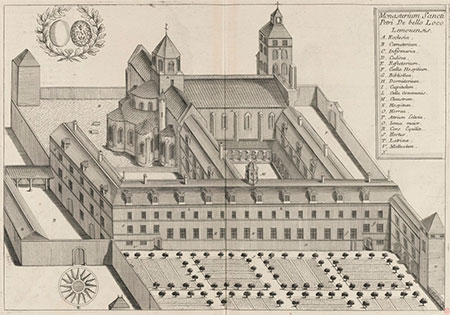
Monasticon Gallicanum
Bibliothèque nationale de France
- BEAUNIER, Dom (1912). Abbayes et prieurés de l'ancienne France. Vol. 5. Bourges. Abbaye de Ligugé
- COTTINEAU, Laurent-Henri (1936). Répertoire topo-bibliographique des abbayes et prieurés. Vol. 1. Mâcon: Protat
- DELOCHE, Maximin (1859). Cartulaire de l'abbaye de Beaulieu. París: Imprimerie Impériale
- FRANZÉ, Barbara (2014). Art et réforme clunisienne : le porche sculpté de Beaulieu-sur-Dordogne. BUCEMA. 18.2
- HADDAD, Élise (2019). (Ré) utilisation de formes anciennes dans le décor sculpté de Beaulieu-sur-Dordogne. Questes, núm. 40
- LEFÈVRE-PONTALIS, M. E. (1923). Beaulieu. Congrès archéologique de France. LXXXIV Session. París: Picard
- MAURY, Jean (1959). Quercy roman. La Nuit des temps, 10. Zodiaque
- MAURY, Jean (1960). Limousin roman. La Nuit des temps, 11. Zodiaque
- PEIGNÉ-DELACOURT, Achille (1877). Monasticon Gallicanum. Paris: G. Chamerot
- POULBRIÈRE, Jean-Baptiste (1873). L'église de Beaulieu et son portail sculpté. Bulletin de la Société archéologique et historique du Limousin, vol. 22
- PÊCHEUR, Anne-Marie, Pierre; i altres (2007). Beaulieu-sur-Dordogne, abbatiale Saint-Pierre. Congrès archéologique de France, 163e session, 2005, Corrèze. Société française d’archéologie
- ROY DE PIERREFITTE, J.-B. L. (1857-63). Études historiques sur les monastères du Limousin & de la Marche, vol. 1. Guêret: Betoulle
- RUPIN, Ernest (1880). Statue de la Vierge en bois recouvert de plaques d’argent. XIIe siècle. Bulletin de la Société scientifique historique et archéologique de la Corrèze, vol. 2
- SAINT-MAUR, Congregació de (1720). Gallia Christiana in provincias ecclesiasticas distributa. Vol. 2. París: Typographia Regia
- VASLET, Amand (1884). Abrégé de l'histoire de l'abbaye de Beaulieu en Bas-Limousin. Bulletin de la Société scientifique, historique et archéologique de la Corrèze, vol. 6
